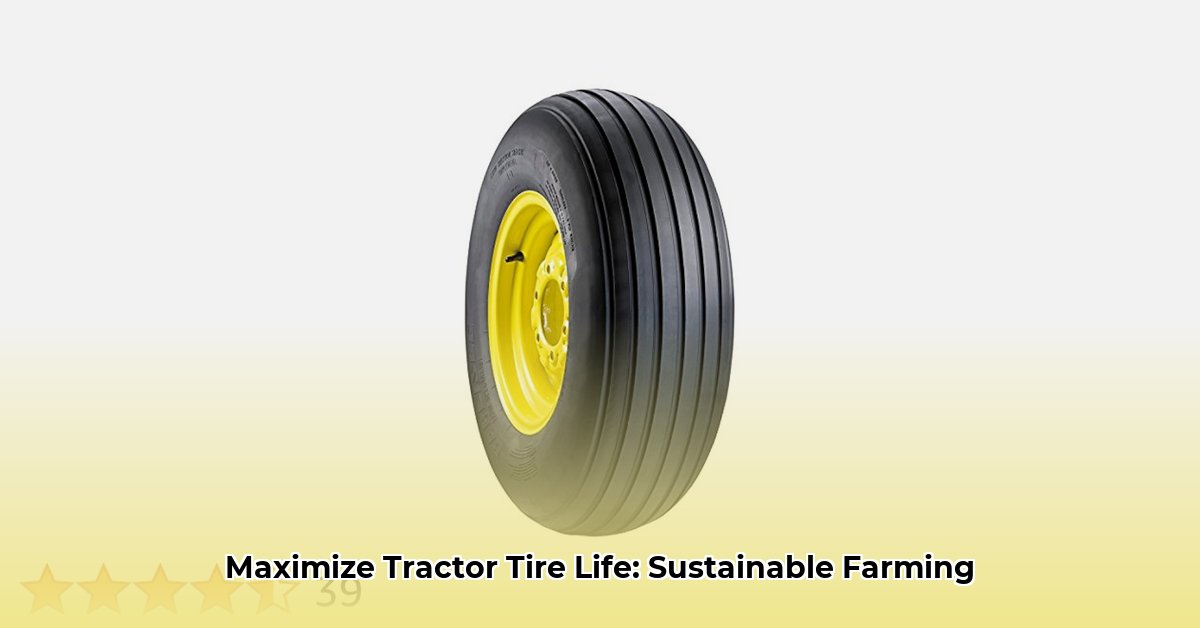
Understanding Your 15-Inch Tractor Tire Options
Choosing the right tires for your 15-inch tractor significantly impacts your farm's efficiency and environmental footprint. Factors like soil type, workload, and budget all influence your choice. The tire's tread pattern—the design on the tire's surface—is crucial. Aggressive, deep treads provide maximum grip in muddy or loose soil, while shallower treads minimize soil compaction on firmer ground. Heavier workloads require tires with higher load capacities to prevent premature wear. While premium tires might have higher upfront costs, their longer lifespan and improved fuel efficiency can lead to long-term savings. For more detailed information on tire sizes, check out this helpful resource: 15-inch tractor tire guide.
Selecting Your 15-Inch Tractor Tires: A Practical Guide
Selecting the optimal 15-inch tractor tire involves a systematic approach:
Assess Your Farming Operation: Analyze soil type, typical workload, and general farming practices. This determines the required tire characteristics (load capacity, tread pattern, durability).
Consult Your Tractor's Manual: This vital step ensures tire compatibility and prevents potential damage to your tractor, potentially voiding any warranty.
Decipher Tread Patterns: Match tread patterns to soil conditions. Aggressive lugs excel in loose soil, while shallower treads are better for firmer ground and minimize compaction.
Maintain Proper Inflation: Correct tire pressure is vital. Under-inflation increases rolling resistance, fuel consumption, and soil compaction. Over-inflation reduces traction and can damage tires. Regularly check and adjust pressure using a reliable gauge.
Regular Tire Maintenance: Regularly inspect tires for cuts, embedded objects, and excessive wear. Rotate tires to ensure even wear and extend their lifespan. Addressing problems early prevents costly repairs.
Sustainable Practices with 15-Inch Tractor Tires
Sustainable agriculture prioritizes responsible tire management. Retreading extends tire life, reducing waste and saving money. Proper inflation reduces fuel consumption and emissions. Responsible disposal – recycling or utilizing tire recycling programs – minimizes environmental impact.
Weighing the Costs: Initial Investment vs. Long-Term Savings
While premium tires have higher initial costs, their longer lifespan and better fuel efficiency often result in long-term savings. Analyze the total cost of ownership, considering initial price, maintenance, fuel, and eventual replacements, to make a well-informed decision.
Different 15-Inch Tractor Tire Types: A Comparison
The following table summarizes common 15-inch tractor tire types:
| Tire Type | Pros | Cons |
|---|---|---|
| Standard Agricultural | Widely available, typically affordable | Shorter lifespan, potentially higher fuel consumption |
| Premium Agricultural | Longer lifespan, better fuel efficiency, improved traction | Higher initial cost |
| Specialized Tires | Optimized for specific applications (e.g., vineyards) | Limited availability, higher price |
How to Reduce Tractor Tire Environmental Impact
Key Takeaways:
- Optimal tire selection significantly influences fuel efficiency and soil health.
- Maintaining correct tire inflation is crucial for minimizing environmental impact.
- Regular tire maintenance extends tire lifespan, reducing waste.
- Exploring and utilizing sustainable tire disposal options is vital.
- Investing in technologies like Central Tire Inflation Systems (CTIS) can optimize efficiency and reduce environmental impact.
"Choosing the right tire can be the difference between efficient, sustainable farming and unnecessary costs and environmental damage," says Dr. Emily Carter, Agricultural Engineering Professor at Cornell University. "Consider it an investment in your farm's long-term health and profitability."
Selecting the right 15-inch tractor tire is a crucial decision impacting your farm's efficiency and environmental sustainability. By employing sustainable practices and consistent maintenance, you invest in a healthier planet and a more profitable operation. Remember, ongoing research continually refines our understanding of tire technology and its role in sustainable agriculture.